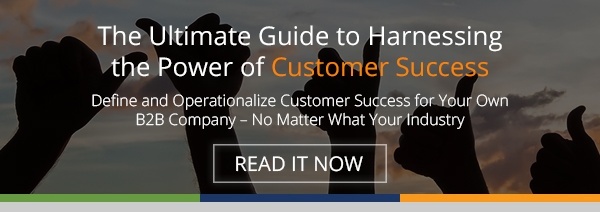If you have ever dated someone new, started a new job or moved into a new neighborhood – and who hasn’t? – then it’s likely you have felt some uncertainty and stress as you acclimated to the situation. You probably had a lot of questions, too.

- Is this a good decision?
- Can I trust this situation, this person, my boss, my new neighbors?
- How soon will I be able to feel comfortable enough to relax a bit?
When you take on new clients, they have the same questions. While they may be excited about choosing to engage with your company, they nonetheless feel some anxiety, at least temporarily.
Some things they may be wondering:
- Will this company do what they promised to do in the sales process?
- Will I get a return on the money I am investing – will my need be met, problem solved, etc.?
- Can I trust this company / these people to look out for my best interests and to operate in good faith?
At the same time, you may be nervous too. You want to validate the client’s decision to choose you. You may be unsure of how successful your company can be with them, if everyone can meet or exceed the expectations that have been discussed during the sales process.
In summary, everyone is a little nervous!
That’s why this phase of the relationship, the Onboarding Stage is critical to the success of client relationships. It’s why experts who specialize in Customer Success in the software industry have written prolifically on onboarding best practices. After all, if you cannot onboard software clients successfully, then they will never adopt and leverage the solutions. Consequently, renewal rates will be dismal.
But onboarding is important for non-software companies too. And while there are not as many resources available in the non-software space, HubSpot has developed an onboarding playbook for marketing agencies, and we’ve developed a Customer Success Strategy Guide for B2B firms.
Some of the benefits achieved with a successful onboarding stage include:
- A good first impression for your company – more confidence, goodwill, etc.
- Less risk of mistakes and mishaps
- Fewer misunderstandings
- More engaged clients
- Better outcomes early in the engagement
So how can you help ensure that your company onboards new clients in a way that builds longstanding, productive relationships?
Here are five tips to get you on your way.
1. Understand the delicacy of the Onboarding stage.
Simply acknowledging the fact that new clients are prone to feeling nervous is helpful. Your point of contact may have had an internal fight to bring your company in, or maybe they're going to be measured on the success of the engagement in some way.
Whatever the reasons for a client’s apprehensiveness, it's always a good idea to empathize with it. You may even want to call it out and validate it verbally with them – “We understand that we have not yet proven ourselves to you and that can be unsettling. But we are confident you are going to be happy with this decision.”
2. Clarify the goals for Onboarding.
Define Onboarding as a stage with a beginning and end. The stage may begin when the client signs a contract or makes their first payment. It will end when the goals are met, so it's important to define those clearly together.
In general, it may be that the onboarding ends when the client realizes their first value from the engagement. For a marketing agency, this may mean that a new lead is generated for the client. For a manufacturer, it may mean when the first order is delivered successfully.
3. Set expectations for what happens during Onboarding.
If your client has a clear understanding of the activities that occur during Onboarding, they will feel calmer and more confident. It helps for them to know what they need to do and what your company will do. An onboarding meeting with all key players is valuable to outline the activities, owners and timelines.
Some common activities during Onboarding include:
- Gathering all technical log-ins and access necessary to do business together.
- Ensuring all necessary parties in your company and in the client company are aware of the new engagement and how they may be affected or involved.
- Announcing the engagement – this could involve posts on social media or in company communications, or a more official press release.
4. Communicate internally and externally.
Once the goals and activities for the Onboarding stage have been defined, it’s critical to keep communications strong. Within your company, you’ll want to make sure that all departments are informed if and when anything may impact their Onboarding activities, if something is accelerated or delayed, for example.
Externally, you’ll want to keep your client up to date as Onboarding progresses. If glitches occur, be proactive about communicating them. Likewise, when things go well, make sure you let your client know – the initial parts came in sooner than expected, production will move up because designs were approved on the first round, the first campaign is showing more promise out of the gate, etc.
5. Balance the Onboarding experience.
In the spirit of onboarding a client fast and well, it can be tempting to move things too fast, throw too many things at them or expect too much of their time. Feeling overwhelmed by Onboarding is just as bad as feeling ignored.
Do your best to balance the Onboarding stage. It may be that you can move fast with some new clients and others need to move a little slower to feel comfortable. Building flexibility into your process will pay off with clients that feel comfortable with you and, as a result, comfortable with your company.
I always remember a job interview I was preparing for early in my career. I was talking to a friend and was nervous about it. He said, “Look, they want you to be the right person for the job as much as you want to be the right person. They want to stop looking.” It gave me a whole new perspective and confidence.
Your client wants you to be the right company for them for the long term. They don’t want you to fail. Onboarding them right will help you make sure you don’t. Hopefully these five tips will help you do just that!












